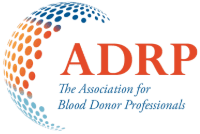How to convert whole-blood donors to plasma donors: An investigation of the mechanisms of awareness of need for plasma and donors’ perception of response efficacy
Author
Carolin Saltzmann
Abstract
Background
Blood donation services need to increase plasma donations to match the rising demand. However, evidence on how to best recruit donors among whole-blood donors is limited. Therefore, this study evaluated the effectiveness of a conversion strategy based on two different mechanisms that drive donor behavior: (a) awareness of the need for plasma donation and (b) perception of response efficacy regarding plasma donation.
Study Design and Methods
An online experiment with 246 German Red Cross whole-blood donors (possibility of plasma donation, blood group AB) was conducted using a 2 × 2 factorial, between-subject setup, and a pre–post treatment measurement. The mechanisms varied and were addressed with experimental treatments and measured. Analyses of variance and hierarchical regression models were used to analyze the effects on intention and behavior.
Results
The intention to donate plasma was low, but increased with treatment (mean valueoverall of intentionbeforeTreatment = 2.63, SD = 1.73 vs. intentionafterTreatment = 3.28, SD = 1.92). Furthermore, 31% of participants expressed willingness to be forwarded to the appointment-scheduling system of the blood donation service for further information. Only the mechanism of response efficacy was significantly associated with the intention to donate plasma (βEfficacy = .254, p = .001; βAwareness of Need = .126, p = .070).
Discussion
A conversion strategy based on making donors aware of their response efficacy is a promising way to optimize donor panels by shifting them to where they have the greatest impact. However, this study also substantiates the difficulty of such an effort. Blood donation services should invest in persuasion efforts and build personalized integrated marketing communications.
February 22, 2023
Related Resources
Engaging blood donors as advocates Social media preferences and associations with marketing
Background: Various critical medical procedures would become impossible without blood donations—saving lives in emergencies, surgeries, and chronic conditions like thalassemia. Therefore, it seems crucial to enhance donor recruitment and ensure…
Rethinking the role of older donors in a sustainable blood supply
INTRODUCTION Many countries, particularly high human development index countries, are facing the challenge of an aging population.1 For Blood Collection Agencies (BCAs) in these countries, an aging population poses two…


